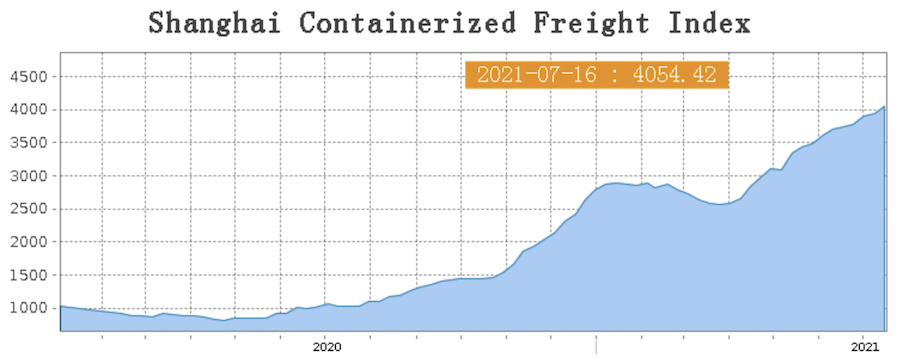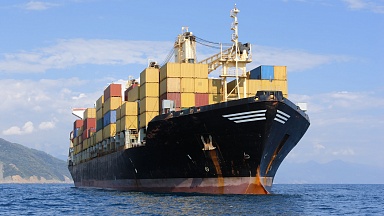The index, which has languished below 1,000 points for most of the past decade, has been breaking records most weeks this year, passing the 3,000 mark in May and showing little sign of weakening amid extraordinary demand in the US and severe port congestion across the globe.
Likewise, Drewry’s World Container Index (WCI) registered another week of growth. The average composite index of the WCI now stands at $5,871 per feu, which is $3,799 higher than the five-year average and 339% higher than a year ago.

Drewry is now forecasting the container shipping industry will post a record $80bn profit in 2021, up from earlier forecasts of $35bn. If freight rates surpass expectations in the remainder of the year, Drewry said an annual profit line in the region of $100bn is not out of the question, more than three times the all-time liner record.
The extraordinary numbers posted across the container shipping universe have prompted politicians and regulators in many countries to get involved, trying to find solutions to ease difficulties for exporters hit by the double whammy of immense freight rates and record delayed box arrivals.
«Demand for ocean freight continues to outstrip supply as peak season heats up, pushing Asia-North Europe rates past the $13k/FEU mark, and sending Europe to South America rates spiking more than 30% since last week as capacity is likely being diverted to ex-Asia lanes,» online international freight marketplace Freightos noted in an update yesterday, adding: «Transpac capacity in particular is so constrained that most bookings — if they can be made at all — are relying on offline bidding wars that showcase the progress that remains to be made in terms of industry digitization.»
A further spike is very likely next week as key US railway operator Union Pacific initiates a week-long halt moving boxes from the west coast inland to Chicago in order to clear a huge container backlog.
A recent analysis from the International Air Transport Association (IATA) shows air cargo is about six times more expensive than ocean freight, compared with a normal spread of about 12 times.
«Some shippers, desperate for inventory, are shifting from ocean to air, an indication of how strained the industry is at the moment,» commented Judah Levine, research lead at Freightos.
Soaring container rates have also pushed the multipurpose shipping sector into record territory, Splash reported earlier this week.





